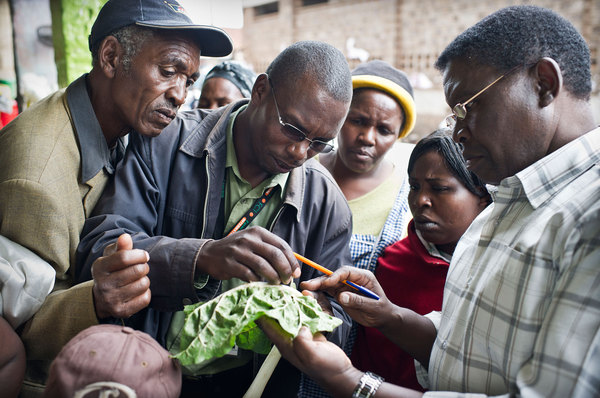Plant doctor workshop in Hangzhou, China, raises awareness of Plantwise training
A recent awareness raising workshop for the plant doctor training of Plantwise was held at the Zhejiang Agriculture and Forestry University (ZAFU) in Hangzhou in Eastern China. The meeting was aimed at raising awareness among university students, the private sector, and plant protection experts about plant doctor training and certification. About 70 participants were present…
Developing pest-smart farmers in Cambodia
In Rohal Suong Climate-Smart Village, adoption of ecological engineering practices has improved farmers’ ability to prevent pests and diseases outbreaks while reducing pesticides use. Every year, a great portion of Cambodian farmers’ income is at risk because of possible pests and diseases (P&D) outbreak. Aside from the inadequate knowledge of farmers, climate change aggravates the…
Is it time for genetically modified bananas in Uganda?
Uganda is the world’s second largest producer of banana crop, with individuals consuming around 1.5 pounds of banana every day. Due to this major need for the success of banana crops within the country, plant pests and diseases are ever more threatening.
Taking on Fall Armyworm in Africa: The search for effective natural enemies
Written by Ivan Rwomushana. Reblogged from CABI’s Invasives Blog. The Fall Armyworm (FAW), Spodoptera frugiperda has emerged as a serious threat to food security for millions of smallholder producers in Africa due to its rapid spread across the continent and extensive damage to staple cereals. At the last count, at least 28 countries were reported to be…
Lead battery soil contamination in Africa and the implications on plant and human Health
Globally, battery manufacturing and recycling plants have been identified as the major sources of soil lead contamination that have resulted in lead exposure to neighbouring communities via the accumulation of lead within plants. Lead is naturally found in soil in relatively low concentrations (10-50 mg/kg) in which it is taken up by plants via the…
Update: New Pest & Disease Records (5 Jan 18)
We’ve selected a few of the latest new geographic, host and species records for plant pests and diseases from CAB Abstracts. Records this fortnight include the first report of the golden apple snail (Pomacea canaliculata) in Iraq, the first report of Ceratocephalus falcatus smut caused by Urocystis eranthidis and a new species of thrip (Genus: Odontothrips)…
Fall Armyworm: A new collaboration to disseminate best management practices to farmers
From the 13th to the 15th of November 2017, USAID and CIMMYT held a Regional Training and Awareness Generation Workshop on Fall Armyworm Pest Management for Eastern Africa in Addis Ababa, Ethiopia. Participants from 11 countries attended the workshop to discuss short, medium and long term strategies to control Fall Armyworm in Africa. Following its…
Plant Doctors in Ghana go digital
The operation of plant clinics in Ghana received a major boost with the introduction of digital devices to facilitate the work of plant doctors. The introduction of tablets and Android phones has proven to help plant doctors improve the quantity and quality of data generated from plant clinic operations.
‘Plant doctors’ to help Myanmar farmers reduce crop losses
A new program in Myanmar has just produced its first group of ‘plant doctors’ – experts who can help farmers reduce their losses by diagnosing problems with their crops.



